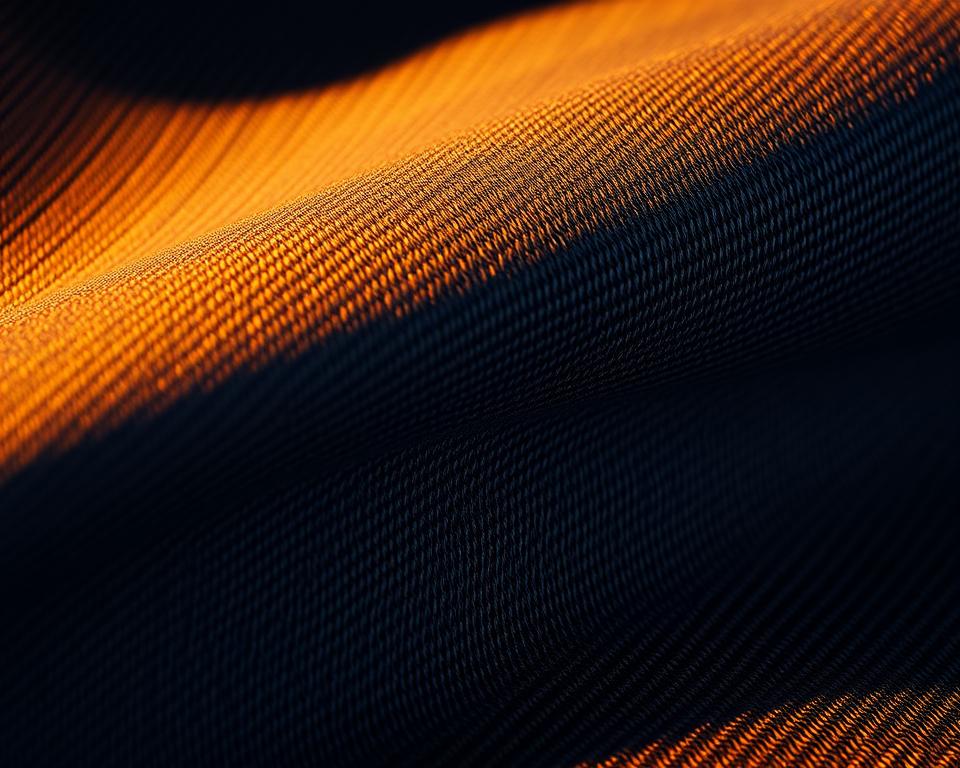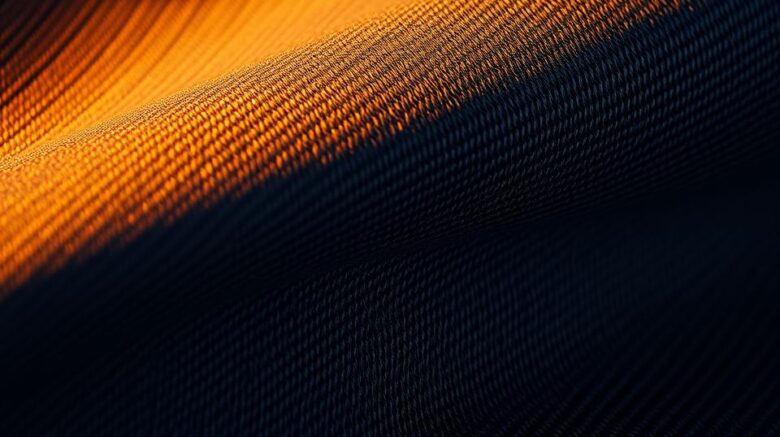The Ultimate Guide to Superior denim Edge-to-Edge Textile
Have you ever wondered the reason certain trousers seem like they’re designed for longevity eternity? It’s all about the materials and craftsmanship. For example, the rising popularity of superior selvedge. This goes beyond common material—it attests to quality and heritage.
Nowadays, a growing number of people are choosing these classic materials for their sturdiness and traditional ewingfly denim allure. Whether you’re a DIY sewist or a denim lover, there’s an exceptional aspect about employing high-quality natural fiber and yarn. It isn’t solely concerned with constructing pants; it centers on fashioning something that tells a story.
Within Core Fabrics, we’ve selected a selection of 14.25oz eco-friendly cotton and flexible choices. Such textiles are ideal for everything from raw trousers to couture jacket patterns. Eager to discover the universe of top-tier fabrics? Let us delve in.
What Is Denim Selvedge Fabric?
Why do particular jeans stand out with their signature, naturally edged seams? The answer resides in the selvedge denim, a high-quality textile renowned for its robustness and old-school charm. Differing from conventional textiles, this fabric is crafted with time-honored methods that have stood the test of time.
The Definition of Selvedge Denim
Selvedge denim is created via retro shuttle looms, which produce narrow widths of about 30-35 inches. They intertwine the textile in a method that delivers self-finished borders, often marked by a characteristic red line. This method confirms the fabric is firmly crafted and extremely robust.
Current looms, on the other hand, yield expansive fabric but do not offer the equivalent of skill. The imperfections in selvedge, like misaligned seams or irregular surfaces, are accepted as part of its charm. This philosophy, often referred to as “the beauty of imperfection”, honors the appeal of natural flaws.
The Making of Selvedge Denim
The manufacturing of selvedge denim entails a detailed process. Shuttle looms weave the weft thread alternately, resulting in a thick and sturdy textile. This method contrasts with modern looms, which emphasize speed and efficiency over quality.
Labels such as Karson Denim maintain vintage Japanese methods from the 90s. They intentionally include flaws to preserve the authenticity of the textile. Every item is evaluated on a four-point system, ensuring it meets the top criteria of quality.
| Feature | Selvedge Denim | Current Denim |
|---|---|---|
| Measure | 30-35 inches | 60+ inches |
| Fabrication Method | Shuttle Loom | Contemporary Loom |
| Finish | Uneven, Imperfect | Consistent |
| Strength | Superior | Moderate |
“The charm of selvedge lies in its imperfections—each flaw tells a story skill and legacy.”
The Legacy of Selvedge Denim
Starting from modest origins to global acclaim, the story of these materials is vibrant and motivational. Originally developed as hardwearing clothing in seventeenth-century France transformed into a symbol of classic elegance and craftsmanship.
Beginnings in Craftsmanship
The foundation of this textile reaches back to Nîmes, France, where it was known as “serge de Nîmes.” Originally designed for the working class, it was constructed with robust cotton and thread. Its durability made it a favorite among workers during the era of the Gold Rush.
By the 20th century, it had become a cornerstone for pants. The shuttering of the Cone Mills White Oak facility became a pivotal moment. This change opened the door for Japanese craftsmen to restore traditional weaving techniques.

Modern Developments in Denim
After World War II, Japan adopted vintage American culture. Artisans repaired classic looms to manufacture genuine reproductions. This dedication to craftsmanship secured the continuance of selvedge as a unique product.
In modern times, innovations from Italy and Turkey have launched sustainable mixtures and stretch variants. These modernizations have expanded the appeal of this classic material. Here at Core Fabrics, we source globally, from Montréal to Asia, to bring you the top-notch quality.
“Selvedge’s story is a celebration of the perennial merit of craftsmanship and legacy.”
Why Choose Selvedge Denim?
What makes selvedge denim distinguish itself in the universe of superior fabrics? Its unique qualities and exceptional longevity have made it beloved among lovers and stylists alike. Whether you’re making pants or a structured jacket, this fabric provides a mix of tradition and modern appeal.
Unique Qualities of Selvedge Fabric
Selvedge denim is known for its firm interlacing, which boosts ripping resistance and wear patterns. In contrast to common fabrics, denim selvedge fabric is fashioned using traditional shuttle looms, yielding a denser and more durable material. This process ensures that all products boast a distinct surface and individuality.
Here’s what makes it special:
- Coarse, stiff raw denim contrasts with pre-washed comfort stretches.
- Through sanforization, sizes become reliable, while natural variants entail a unique shrinkage journey.
- Variants include 9.5oz Eco Finish to 14.25oz Organic, suited for diverse applications.
Sturdiness and Lifespan
One of the most remarkable aspects of selvedge denim is its long life. The tighter weave not only increases durability but also allows for characteristic wear patterns over time. This makes it a treasured choice for those seeking enduring style.
Important aspects:
- Mid-weight fabrics from 12oz to 14oz work well for tailored jackets and evolving jeans.
- For classic jean longevity, the 14.25oz True Indigo is a top recommendation.
- Green alternatives, including recycled cotton with indigo blends, contribute to a sustainable collection.
Core Fabrics offers an assortment of products tailored for every requirement. From raw to sanforized, each piece is crafted to deliver exceptional quality and value.
Selvedge vs. Wide Denim: A Comparison
When it comes to crafting long-lasting and trendy pieces, the decision of textile is pivotal. Two popular options are selvedge and wide denim, each with unique characteristics. Understanding their differences can help you choose the ideal material for your project.
Key Differences in Weaving Techniques
Selvedge denim is produced using classic shuttle looms, producing limited spans of 30-35 inches. This striped selvedge denim fabric method creates firm borders, often marked by a characteristic red line. Conversely, wide denim employs advanced projectile looms, yielding widths of 60 inches or more.
Old-style shuttle looms yield roughly 3m per minute, while projectile looms can produce up to 30 meters per minute. Such speed differences influence both the expense and the finish of the final product.
Benefits and Drawbacks
Selvedge denim is known for its premium quality and durability. Its narrow width suits it well for projects where exposed edges or decorative patches are required. However, it can be pricier, typically around $23 per meter.
Wide denim is budget-friendly, priced around $8 per half-meter. Its broader span reduces waste, well-suited to large projects like interior décor projects. However, it lacks the unique edge finish of selvedge.
| Attribute | Selvedge Denim | Wide Denim |
|---|---|---|
| Measurement | 30-35 inches | 60+ inches |
| Method | Classic Shuttle Loom | Projectile Loom |
| Rate | 3m/min | 30 meters per minute |
| Price | $23/meter | $8 per half-meter |
When precise, structured edges are required—as in Grainline Thayer jackets—selvedge wins out. For larger projects, wide denim offers better value and efficiency. Weigh your requirements carefully to decide.
How to Use Selvedge Denim
Crafting with high-end textiles raises your projects to a new standard. Whether you are creating pants, blazers, or skirts, understanding the basics of yardage, sewing techniques, and care ensures a professional finish. We will examine how to make the most of this everlasting textile.
Fabric Quantities for Your Projects
It is essential to compute the correct fabric amount when designing your creation. Men’s jeans typically require roughly 3-3.3 yards, factoring in flaws and potential shrinkage. Trucker jackets typically require 3.3 yards, while skirts require only 2 yards.
Creative pattern placement can help manage imperfections in the material. Instead of cutting around defects, consider integrating them into your design for a unique look.
| Garment | Fabric Needed |
|---|---|
| Jeans for Men | 3 to 3.3 yards |
| Work Jacket | 3.3 yards |
| Dress | 2 yards |
Sewing Techniques and Maintenance
The correct gear and skills secure a refined outcome. Select #70 to 110 needle sizes and foot accessories designed for heavy materials. For contrast stitching, Gütermann rPET thread is a reliable choice.
Consider these extra tips:
- Employ a tailor’s clapper to achieve crisp creases without gloss.
- Our denim kits from Core Fabrics comprise topstitch thread, rivets, and 9mm jeans buttons to ensure a refined result.
- Structured edges, essential for jackets, are best achieved with selvedge.
Proper care extends the life of your creations. Wash sparingly and air dry to maintain the material’s integrity. With these tips, your projects will stand the test of time.
To Conclude
Working with high-end textiles is not solely about longevity; it’s about infusing character. Selvedge denim embodies this principle, merging artisanal charm with long-lasting quality. Whether you’re sewing jeans or a structured jacket, this material tells a story with every stitch.
Core Fabrics simplifies your creative journey. Our swatch service lets you touch and test the fabric before deciding. Additionally, benefit from complimentary shipping on orders exceeding $150 USD throughout North America.
Looking ahead, eco-friendly blends and vintage washes are shaping the future of cotton textiles. Such innovations provide novel methods for infusing eco-consciousness and fashion into your closet.
Eager to explore top-tier textiles? Begin your journey now and appreciate the merit of intentional crafting. Your future project might just be that lasting masterpiece.
